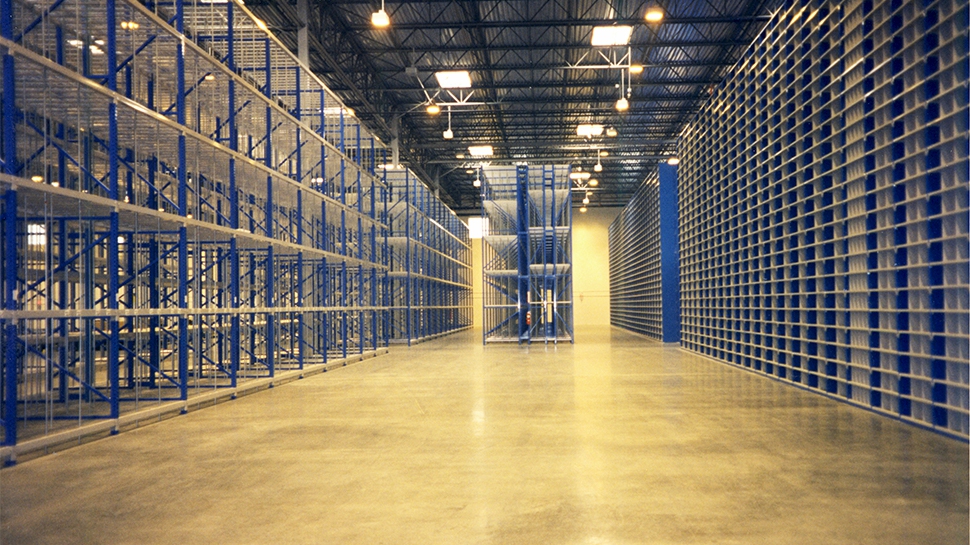
In 1996, Toyota Motor Corp. completed a new, 760,000-square-foot parts warehouse designed to reduce life-cycle costs. This new facility cost Toyota approximately two and a half times more than their basic design concept, but the enhanced design and additional amenities were expected to achieve significant savings by lowering costs for maintenance, operations, and insurance over the service life of the facility. The use of Type K Shrinkage-Compensating Concrete for the floor slab was specified to sizably reduce the costs related to control joint maintenance and repair, corner breaks and edge spalls.
Toyota spends about $100,000 annually on concrete floor repairs related to joints damaged by forklifts at its 11 other U.S. parts and distribution centers. The use of Type K Shrinkage-Compensating Concrete allowed Toyota to achieve cost savings both during construction and in operations and maintenance costs. Much larger slabs with joint spacing at 120'x120' were placed during construction, which resulted in over 90% fewer control joints. Reducing the number of control joints directly reduced the amount of lineal joint footage that had to be tooled, cut and treated during construction, and then maintained for the service life of the slab. The new facility design contains only about 1/10th the number of control joints as a typical warehouse design.
The advanced cement technology used to create the Komponent® expansive additive used in Type K concrete, and its efficient hydration mechanism, effectively eliminates bleed water. The lack of bleed water prevents dilution of the cement paste at the surface and results in 30% to 40% greater abrasion resistance. In addition, drying shrinkage cracking is prevented, curling is eliminated, and spalling and corner breaks avoided. Type K concrete provides a much more stable floor slab that maintains its floor flatness and levelness for the service life of the placement. Due to the automated nature of operations and service loads, Toyota’s design required 6" and 8" thick, super flat floor slabs with a surface deviation of less than 1/10 inch per 10 feet. By maintaining floor flatness and levelness long-term, operational efficiencies can be maintained without disruption for maintenance and repair, and automated equipment calibration and forklift maintenance costs are reduced.
Kelly Kerns, Toyota’s Facilities Project Manager based in Orange, CA, noted, “We felt that we optimized the value of the dollars we spent on our warehouse” using Type K Shrinkage-Compensating Concrete. Upon evaluation of savings in concrete maintenance alone, the facilities team reported an annual savings of over $10,000 using Type K Shrinkage-Compensating Concrete when compared to their other parts-warehousing locations.
CTS Cement was proud to be a part of this innovative facility design and helping Toyota achieve their objective of reducing life-cycle costs.